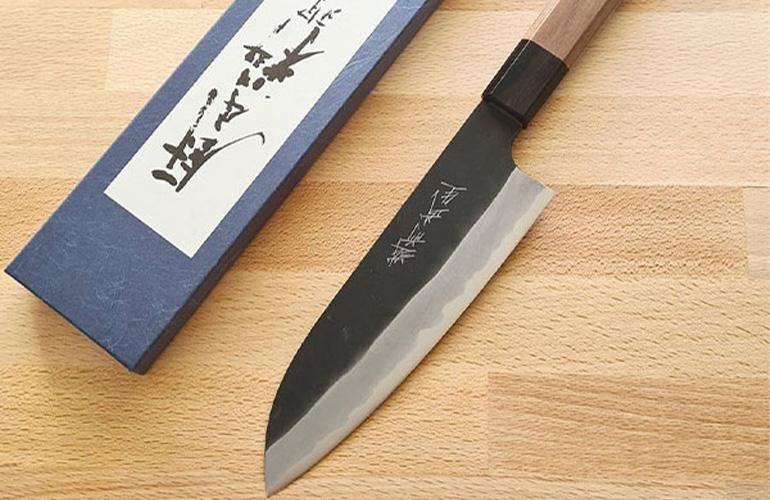
Japanese Chef Knife Types
Whether you’re a home cook, amateur chef or a professional, we all need a good set of knives in the kitchen.
For many chefs it’s what defines them, and a Japanese chef knife arguably is as good as it gets. Working with the right blade will ensure superior precision and maintain the integrity of the ingredients you’re working with.
Japanese chef knives are becoming increasingly popular with Western chefs, and it’s not surprising given their rich history and reputation for quality, sharpness and overall precision craftsmanship.
At Chefs Edge we specialise in high performance Japanese kitchen knives crafted by some of Japan’s most talented blacksmiths. We only pursue kitchen knives of the highest quality and the finest craftsmanship, and provide them to you at the best possible price, while striving to deliver the best customer service possible.
If you’re considering Japanese chef knives for your kitchen, it’s important to first understand the different kinds, to help you decide what’s right for you. The types of kitchen knives you need will ultimately depend on your level and style of cooking, and the techniques you’ll demand from your knife.
Gyuto
If you’ve never owned a Japanese kitchen knife before, the Gyuto meaning ‘beef knife’ is the most versatile choice to start your collection and obsession! One of the most commonly used knives in the kitchen, the Gyuto can cover a majority of kitchen tasks.
It’s similar to a classic Western style chef’s knife, except that it’s typically lighter and thinner. The Gytuo is typically anywhere between 18cm-27cm in length, depending on the required task. It has a long curve from heel to point and is ideal for rocking-cuts and precision work like mincing, fine preparation of vegetables and slicing meat.
Santoku
If you’re looking for another good all-rounder, a Santoku knife is your next best choice after the Gyuto. This smaller multipurpose knife has a flatter blade profile that the Gyuto, and is great for dicing and chopping vegetables, fish and meat.
The broader blade also helps to scoop ingredients off the board with ease. The Santoku can range from 13cm to 18cm in length, and has a slightly flatter cutting edge than the Gyuto.
Bunka
A versatile blend of the Santoku, Gyuto, and Nakiri, the Bunka is a smaller and thinner than the Gyuto and Santoku, with a much higher taller blade, and a ‘K-tip’ which allows more specialised cutting tasks.
This general purpose knife is also ideal for push cutting and chopping vegetables, and can handle delicate work like trimming and paring with ease. (Plus, they look absolutely fantastic, our favourite blade shape by far!)
Deba
For Western Chef’s the Deba is the ultimate butcher’s knife alongside the trusty meat cleaver. Although the Deba is traditionally known for its uses in filleting fish, its structure merits its use for cutting through joints of meat and poultry.
You’ll notice that an authentic Japanese Deba will have a single bevel edge, while the Western version has a double bevel edge, which is why it’s also ideal in meat preparation.
The Deba has a thick spine, and is usually heavier than it’s Gyuto/Santoku counterparts. This extra weight helps make light work of more heavy duty cutting tasks.
Nakiri
As its meaning suggests, the Nakiri knife is a vegetable knife. Crafted with a straight double edged blade and no tip, it’s perfect for chopping and dicing.
You’ll find this knife to be everyone’s ‘go to’ in most Japanese homes. The flatter blade profile allows more of the cutting edge to be in contact with the board.
Petty
The Japanese version of a French petit knife, the Petty knife is the quintessential paring and utility knife.
It’s nimble and perfect for small handheld tasks that the Gyuto or Santoku is too large for, such as peeling and cutting small fruit, vegetables and herbs. The small length of the blade makes sharpening a breeze compared to other types of knives.
Yanagiba
The original sushi knife! Traditionally used to cut sashimi, but these days can also be used to cut meat. This is a long, thin blade up to ~37cm in length, and is a single bevel, chisel ground edge. This ensures the meat falls off to one side and repeated cuts can be made to large pieces of meat in quick succession with excellent repeatability.
Other types of Japanese kitchen knives
Chukabocho – the Japanese version of a cleaver, it is large and rectangular in shape and great for preparing large veggies such as cabbage. The thin blade also means it can handle delicate tasks like trimming and mincing herbs. This cleaver is not designed to be used as a meat cleaver.
Pankiri – a serrated bread knife, only used for slicing bread and baked goods.
Usuba – a vegetable knife with a Kataba blade. This knife is a little more difficult to use than a Nakiri, but its shape and sharpness ensures a clean and crisp cut every time.
Whether it’s slicing and dicing, chopping or carving, you’ll find the perfect workhorse in the kitchen with a Japanese kitchen knife. If you need help deciding on what knife will best suit your needs, get in touch with the team at Chefs Edge. Once you’ve got your hands on a Japanese kitchen knife you’ll never look back!
